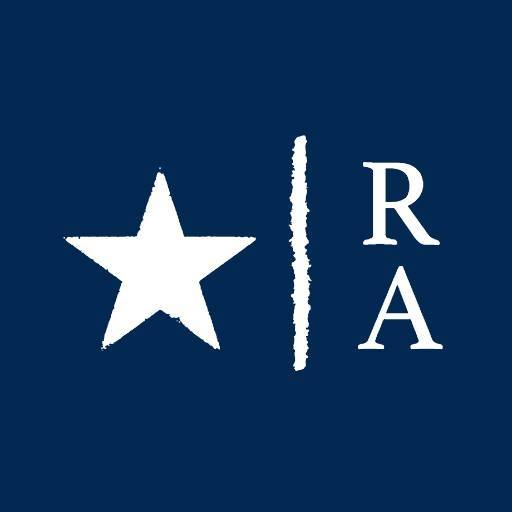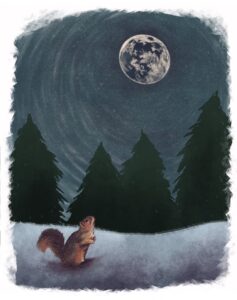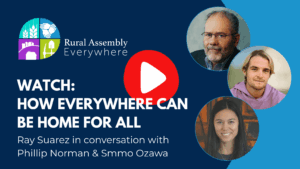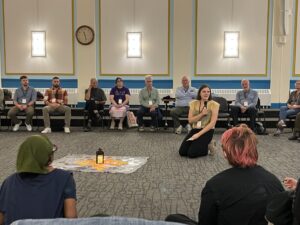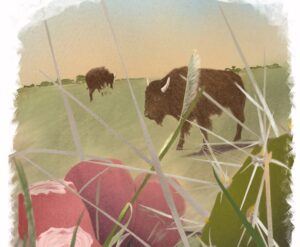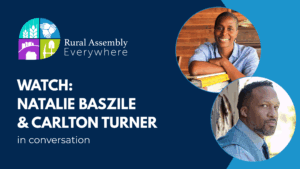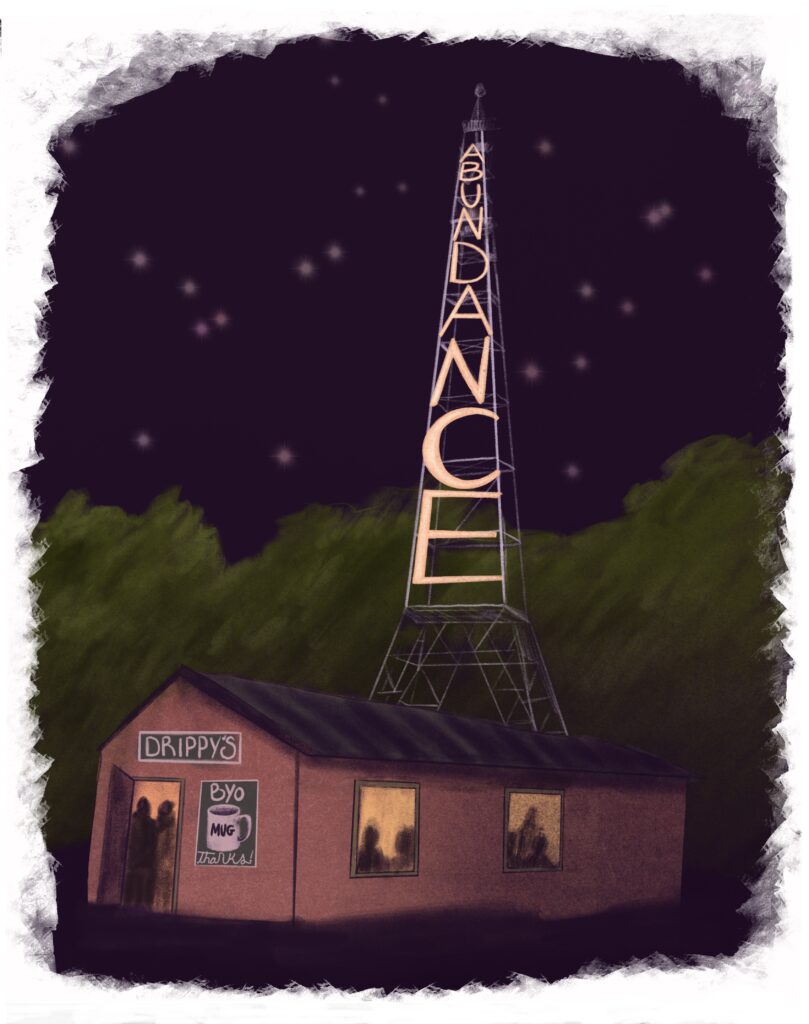
Illustration and story by Nhatt Nichols
Mary Welcome is an artist whose medium defies classification. She doesn’t use oil paints or clay to create her art, instead she uses her artistic curiosity to help create better communities.
“Usually when I’m working in community, I’m trying to create whatever project needs to be made, so that both person and place are going to tend to one another better, steward one another better,” Welcome said.
Sometimes, that looks like building a radio station, creating arts programming, or supporting folks who want to organize around housing justice. It all depends on what the community needs, and what resources they have to share. Rural places are not all the same, and Welcome comes into each community she’s invited into with an open mind and heart.
“I don’t believe in a prescriptive formula for cultural organizing,” Welcome said. “I think we need to be very nimble, flexible and adaptable; to come around a table and find solutions for whatever’s not working.”
This idea of working with the resources you have and recognizing community abundance does not come naturally to a lot of rural spaces. We focus on what we don’t have: housing, jobs, grocery stores, third places. But what if we looked at the potential each one of us rural people brings to our place and invested in growing something together based on the skills we actually have?
That’s part of what makes Welcome’s work so beautiful; she is able to bring fresh eyes and ideasto see the resources that others may take for granted. By bringing the idea of abundance in at the beginning, people are more willing to reach for each other, to see the potential for growth over the potential for conflict.
For the past six months, Welcome has been doing something unusual for her practice; she’s been focusing on her hometown of Palouse, in Eastern Washington. Working with a collective of seven artists, she’s gently explored what kind of third spaces their community needs.
Enter the Strange Grange, an analog-first community venue for neighbor-led programming. With the flexibility of a low-rent space, Welcome and her fellow artists were able to test out different kinds of gatherings to see what their neighbors were interested in.
They’ve hosted a pop-up cafe called Drippies, which only served drip coffee, and offered a program called Quiet Hours, which was time to come to the Strange Grange and write letters, read your book or knit, what Welcome calls “introvert friendly public programming.”
The Strange Grange organizers emphasize that it is an analog space; they’re not posting to social media or encouraging online connections in any way. By advertising with flyers and word of mouth, and actively discouraging people from using devices while attending events they’re able to encourage in-person, neighborly connections.
“The most amazing thing is that just by once or twice a month offering pretty okay coffee where you have to bring your own mug, the response has been enormous.”
Welcome has discovered that a lot can happen between people when given the chance to find the small moments that nourish and connect. “You get comfortable in remembering that feeling not being told what to talk about, what to do, or even what to buy. Just come in, meet a neighbor, work on a puzzle. And I think it’s pretty good medicine.”
